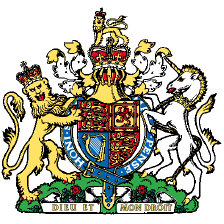Let’s draw a line on badly planted trees…. This wet and windy spell of weather has made it all too easy to see which trees have been planted too deep over recent years. I saw a Lime gently rocking in the soil yesterday, its trunk leaving an ever increasing hollow in the soil line, signifying that its root system is buried way below the correct level. It is widely recognised that planting trees to deep is the chief cause for their premature decline.
Tree roots need oxygen and water blended in measure so inevitably grow within the top metre of the soil. We tell clients buying a Barcham Tree to plant the container an inch proud of the soil line to allow it to settle back over time into the disturbance caused by digging the hole. Better to plant too proud than too deep!
Root balled trees present a real challenge. Cultivation and root balling in the field heave soil up the stem so that they sit several inches too deep to start with. Nurseries who containerise root balled trees heap compost on top of them and then landscapers use root anchors to stabilize them at planting. I think most root balled trees are planted at least 5 inches to deep and this is the chief reason for failure further on down the line.
Planting pit design is another area of concern. I speak to landscape architects who specify a standard 1.2 metre square pit but why make it so deep? The tree will only settle into the disturbed soil, especially if dragged down by the force of a root anchor, with the roots ending up in a compacted soil profile with no oxygen to fuel them. Width rather than depth is what a tree needs.
We are not alone in this. Professor Gary Watson, researching this problem in the USA, has coined the term ‘Root Shank’ for the tubular stem of the tree below ground before the root system starts. Imagine a sumptuous red wine glass with a delicate stem, flat base and wide cup. This is a good way to picture a tree and how it stands firm. If its base isn’t wide it blows over easily and if it is planted too far up the stem it rocks about in the soil.
When we lift our trees from the field and containerize them, the top of the first root is no more than a centimetre under the compost level and for customers who specify, we then dab a paint line at the point the root flare leaves the compost. For the customer, if they can’t see this paint line after planting, they know it is planted too deep! We call this ‘The Barcham Line’ and hopefully it will become an invaluable aid to countering the annoying and self-destructing practice of deep planting


